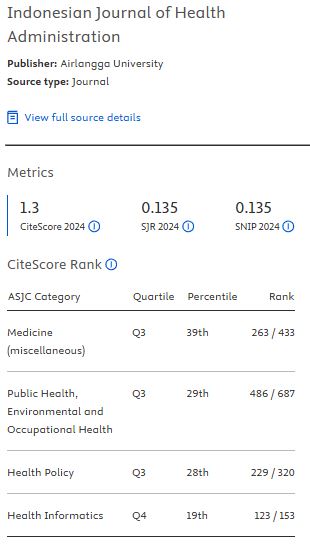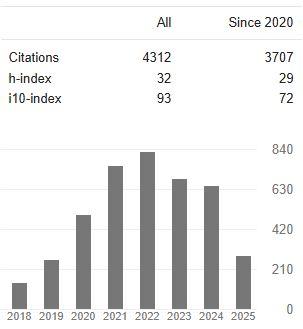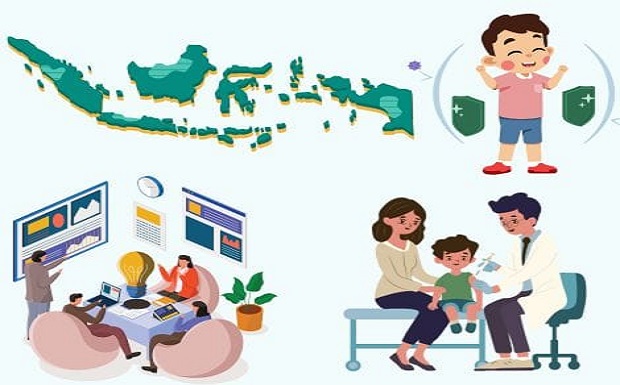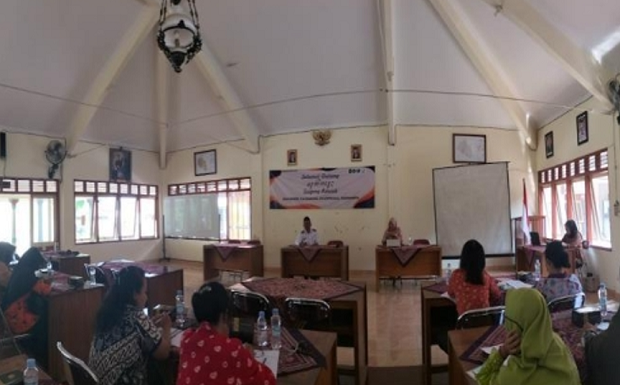THE INTERNET AS A HEALTH INFORMATION IN DECISION MAKING OF PREGNANT WOMEN

Background: Maternal and Child Health (MCH) is still becoming a health problem in Indonesia. One of the causes of maternal mortality is the speed of decision making in the family. Decision making is influenced by knowledge, awareness, family shape and culture in the neighborhood.
Aims: the study aimed to identify and analyze the relationship between the use of the internet as a health information and maternal decision-making regarding emergency help
Methods: This study used a mixed-method approach. The sample of 175 respondents. Data analysis performed in this study was frequency analysis, cross tabulation and chi-square.
Results: There were 40% of respondents used the internet as a source of pregnancy information. Pregnant women had the information about pregnancy from google, instagram and whatsApp group. There were 45.70% of them have made decisions independently regarding the emergency relief. Chi-square analysis showed a p-value ="0,000” with a contingency coefficient of 0,368 indicating the use of the internet as a health information related to decision making of pregnant women regarding emergency relief.
Conclusion: The conclusion of this study is that there were pregnant women who were using the internet for health information and the majority of pregnant women had made decisions regarding emergency relief independently.
Arihta T, D. and Kristina, R. (2018) ‘Perilaku Suami dalam Pengambilan Keputusan pada Ibu Bersalin ada Kasus Kegawat Daruratan Maternal di RSUD Koja Tahun 2018', Majalah Kesehatan Pharmamedika, 10(2), p. 092. doi: 10.33476/mkp.v10i2.728.
Damayanti, N. A. et al. (2019) ‘Integrated Information System for Early Detection of Maternal Risk Factors Based on Continuum of Care Approach of Mother and Toddler Cohorts', Healthc Inform Res. The Korean Society of Medical Informatics, 25(3), pp. 153–160. Available at: https://doi.org/10.4258/hir.2019.25.3.153.
Ghose, B. et al. (2017) ‘Women's decision-making autonomy and utilisation of maternal healthcare services: Results from the Bangladesh Demographic and Health Survey', BMJ Open, 7(9), pp. 1–8. doi: 10.1136/bmjopen-2017-017142.
Gravel, K., Légaré, F. and Graham, I. (2006) ‘Barrier and facilitators to implementing shared decision-making in clinical practice: A systematic review of health professionals' perceptions', Implementation science : IS, 1, p. 16. doi: 10.1186/1748-5908-1-16.
Huberty, J. et al. (2012) ‘Describing the Use of the Internet for Health, Physical Activity, and Nutrition Information in Pregnant Women', Maternal and child health journal, 17. doi: 10.1007/s10995-012-1160-2.
Javanmardi, M. et al. (2018) ‘Internet Usage among Pregnant Women for Seeking Health Information: A Review Article', Iranian journal of nursing and midwifery research. Medknow Publications & Media Pvt Ltd, 23(2), pp. 79–86. doi: 10.4103/ijnmr.IJNMR_82_17.
Kementerian Kesehatan (2017) Profil Kesehatan Indonesia Tahun 2017. Jakarta: Kementerian Kesehatan.
Lagan, B. M., Sinclair, M. and Kernohan, W. G. (2011) ‘What Is the Impact of the Internet on Decision-Making in Pregnancy? A Global Study', Birth, 38(4), pp. 336–345. doi: 10.1111/j.1523-536X.2011.00488.x.
Lynch, C. and Nikolova, G. (2015) ‘The internet : a reliable source for pregnancy and birth planning ? A qualitative study', MIDIRS Midwifery Digest, 25, pp. 193–199.
McCarthy, J. and Maine, D. (1992) ‘A Framework for Analyzing the Determinants of Maternal Mortality', Studies in family planning, 23, pp. 23–33. doi: 10.2307/1966825.
Moon, R. Y. et al. (2019) ‘Mothers' perceptions of the internet and social media as sources of parenting and health information: Qualitative study', Journal of Medical Internet Research, 21(7), pp. 1–9. doi: 10.2196/14289.
Mulauzi, F. and Daka, K. (2019) ‘Maternal Health Information Needs of Women : a Survey of Literature', Journal of Lexicography and Terminology (JLT), 2(1), pp. 57–82.
Notoatmodjo (2003) Pendidikan dan Perilaku Kesehatan. Jakarta: Rineka Cipta.
Novvi K, Ermalinda E, P. W. . (2016) Asuhan Kebidanan Kegawatdaruratan Maternal dan Neonatal. Jakarta: In Media.
Rahimi, S. A. et al. (2017) ‘Are mobile health applications useful for supporting shared decision making in diagnostic and treatment decisions?', Global Health Action. Taylor & Francis, 10(3). doi: 10.1080/16549716.2017.1332259.
Sanders, R. A. and Crozier, K. (2018) ‘How do informal information sources influence women's decision-making for birth? A meta-synthesis of qualitative studies', BMC Pregnancy and Childbirth, 18(1), p. 21. doi: 10.1186/s12884-017-1648-2.
Sayakhot, P. and Carolan-Olah, M. (2016) ‘Internet use by pregnant women seeking pregnancy-related information: A systematic review', BMC Pregnancy and Childbirth. BMC Pregnancy and Childbirth, 16(1). doi: 10.1186/s12884-016-0856-5.
Shorten, A. et al. (2015) ‘Developing an Internet-Based Decision Aid for Women Choosing Between Vaginal Birth After Cesarean and Planned Repeat Cesarean', Journal of midwifery & women's health, 60(4), pp. 390–400. doi: 10.1111/jmwh.12298.
Somé, D. and Sombié, I. (2013) ‘How decision for maternal care is made in two rural medical districts of Burkina Faso? A qualitative study.', Reproductive health, 10(8). doi: 10.1186/1742-4755-10-8.
WHO (2019) WHO Guideline Recommendations on Digital Interventions for Health System Strengthening. doi: 10.1177/156482658000200103.
Wulandari, A. P., Susanti, A. I. and Mandiri, A. (2016) ‘Gambaran Pengambilan Keputusan Saat Proses Rujukan Dari Tingkat Primer Ke Tingkat Sekunder Di Rumah Sakit Umum Daerah Sumedang', Jurnal Sistem Kesehatan, 2(2), pp. 56–62. doi: 10.24198/jsk.v2i2.11230.
Copyright (c) 2022 Nyoman Anita Damayanti, Ratna Dwi Wulandari, Ilham Akhsanu Ridlo, Nadhif Alfia Charista Kusniar, Asrining Pangastuti

This work is licensed under a Creative Commons Attribution-ShareAlike 4.0 International License.
1. As an author you (or your employer or institution) may do the following:
- make copies (print or electronic) of the article for your own personal use, including for your own classroom teaching use;
- make copies and distribute such copies (including through e-mail) of the article to research colleagues, for the personal use by such colleagues (but not commercially or systematically, e.g. via an e-mail list or list server);
- present the article at a meeting or conference and to distribute copies of the article to the delegates attending such meeting;
- for your employer, if the article is a ‘work for hire', made within the scope of your employment, your employer may use all or part of the information in the article for other intra-company use (e.g. training);
- retain patent and trademark rights and rights to any process, procedure, or article of manufacture described in the article;
- include the article in full or in part in a thesis or dissertation (provided that this is not to be published commercially);
- use the article or any part thereof in a printed compilation of your works, such as collected writings or lecture notes (subsequent to publication of the article in the journal); and prepare other derivative works, to extend the article into book-length form, or to otherwise re-use portions or excerpts in other works, with full acknowledgement of its original publication in the journal;
- may reproduce or authorize others to reproduce the article, material extracted from the article, or derivative works for the author's personal use or for company use, provided that the source and the copyright notice are indicated.
All copies, print or electronic, or other use of the paper or article must include the appropriate bibliographic citation for the article's publication in the journal.
2. Requests from third parties
Although authors are permitted to re-use all or portions of the article in other works, this does not include granting third-party requests for reprinting, republishing, or other types of re-use.
3. Author Online Use
- Personal Servers. Authors and/or their employers shall have the right to post the accepted version of articles pre-print version of the article, or revised personal version of the final text of the article (to reflect changes made in the peer review and editing process) on their own personal servers or the servers of their institutions or employers without permission from JAKI;
- Classroom or Internal Training Use. An author is expressly permitted to post any portion of the accepted version of his/her own articles on the author's personal web site or the servers of the author's institution or company in connection with the author's teaching, training, or work responsibilities, provided that the appropriate copyright, credit, and reuse notices appear prominently with the posted material. Examples of permitted uses are lecture materials, course packs, e-reserves, conference presentations, or in-house training courses;
























